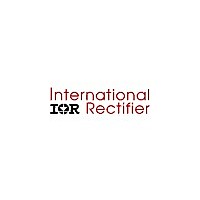IRPLCFL4 International Rectifier, IRPLCFL4 Datasheet - Page 3

IRPLCFL4
Manufacturer Part Number
IRPLCFL4
Description
IC BALLAST DIMMING CFL 3-WAY
Manufacturer
International Rectifier
Datasheet
1.IRPLCFL4.pdf
(12 pages)
Specifications of IRPLCFL4
Main Purpose
Lighting, Ballast Control
Utilized Ic / Part
IR2156
Lead Free Status / RoHS Status
Contains lead / RoHS non-compliant
Secondary Attributes
-
Embedded
-
Primary Attributes
-
Other names
*IRPLCFL4
IRPLCFL4
This approach has some serious drawbacks:
Firstly, since the ballast must be designed to give 100% light output for the lamp when the bus voltage
is 300V and the frequency is 40kHz, it is not easy to achieve satisfactory preheat and ignition when
the bus voltage is at 150V because of the limitations in the peak voltage that the output circuit is able
to produce from a 150Vpp half bridge voltage.
One strategy that has been used is to omit the preheating phase and steer the oscillator frequency to
resonance during ignition using feedback from the output circuit. This ensures that at switch on the
highest possible ignition voltage will be applied to the lamp. In this way the lamp will ignite in whichever
position the 3 way switch is set.
Such a scheme could reliably ignite the lamp when the DC bus is at 300V, however without correct
preheating the ignition voltage of the lamp and consequently the peak current in the MOSFET half
bridge during ignition will be higher. Also the life of the lamp is substantially reduced when there is no
preheat due to far greater stress occurring on the cathodes at the point of ignition.
Ignition when the DC bus voltage is at 150V is very difficult. Tests indicated that sweeping the
frequency down through resonance failed to produce sufficient ignition voltage leaving the ballast in
open circuit running mode with inevitable hard switching at the half bridge. The conclusion from this
is that the ballast needs to oscillate at resonance for an extended period of time in order for the lamp
to ignite at 150V considering that the output inductor and capacitor have been designed to produce
100% lamp power at 300VDC bus when the frequency is 40-45kHz.
Many CFL ballast designs do not incorporate a current sense and shutdown function to protect the
circuit in the case of ignition failure and so the ballast would eventually fail if left switched on due to
the high MOSFET switching losses causing thermal destruction. This would not matter with and
integrated ballast / lamp type product when the lamp has failed.
It has also been observed that hard switching occurs at the MOSFET half bridge when the DC bus
voltage is low in position (1) since when the ballast is running it will be close to resonance, bearing in
mind that the resonant frequency shifts downwards in run mode. Hard switching is very undesirable
because of the high peak currents that occur when each MOSFET switches on. This has been shown
to result in a higher rate of field failures in ballasts due to MOSFET failure.
The conclusion is that the approach to design described above is unable to provide a reliable ballast.
Solution
A completely new approach has been developed that overcomes all of the above limitations based
around the popular and versatile IR2156 ballast control I.C.
www.irf.com
3











